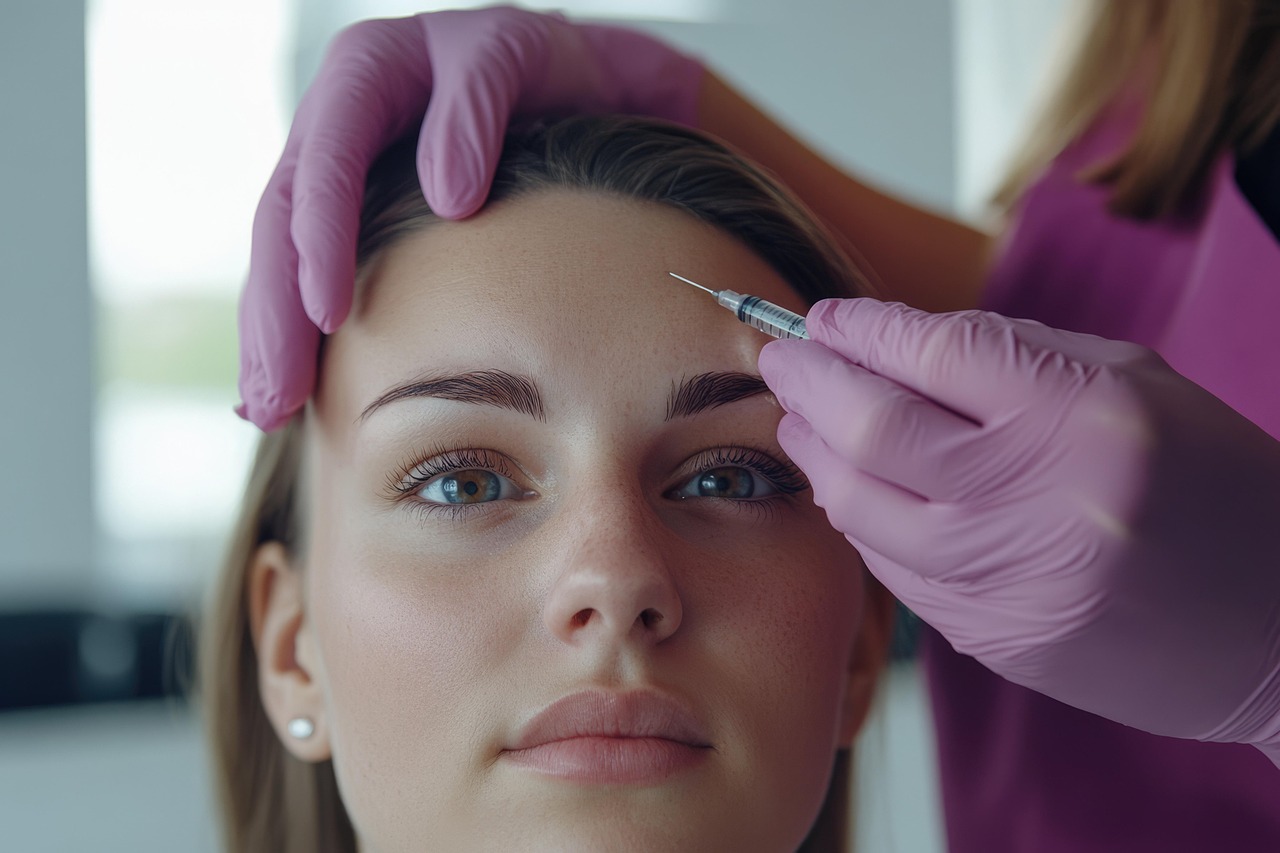Discover the Benefits of Face Fillers: Smooth, Natural-Looking Results for 2025
Face fillers are becoming increasingly popular for enhancing facial features and restoring volume. This guide covers the types of face fillers available, how they work, and what to consider before getting treated. Learn how these non-surgical treatments can give you smoother, more youthful skin.

What Are the Key Benefits of Face Fillers?
Face fillers offer numerous advantages that make them an attractive option for those seeking facial rejuvenation. One of the primary benefits is their ability to instantly restore lost volume in areas that naturally hollow with age, such as the cheeks, temples, and under-eye region. This volumization creates a more youthful, rested appearance without changing your fundamental facial structure.
Another significant benefit is wrinkle reduction. Face fillers effectively smooth moderate to severe lines, including nasolabial folds (smile lines), marionette lines, and other facial creases. The results appear natural because fillers work with your facial movements rather than freezing muscles like some other injectables.
Face fillers also enhance facial contours, allowing practitioners to subtly reshape features like the chin, jawline, and cheekbones. This can create better facial balance and symmetry without the permanence or recovery time of surgical procedures. Additionally, many modern fillers stimulate collagen production, providing progressive improvement to skin quality over time alongside the immediate volumizing effects.
What Different Types of Face Fillers Are Available?
The face filler market offers various formulations designed to address specific concerns and areas of the face. Hyaluronic acid (HA) fillers remain the most popular category, including brands like Juvederm, Restylane, and Belotero. These fillers contain hyaluronic acid, a naturally occurring substance in the skin that attracts and retains moisture. HA fillers are versatile, reversible (they can be dissolved if needed), and come in different consistencies suitable for various facial regions.
Calcium hydroxylapatite fillers (like Radiesse) provide structural support and stimulate natural collagen production. This makes them excellent for deeper lines and areas requiring more substantial volume restoration, such as the cheeks and jawline. They typically last longer than HA fillers but cannot be dissolved if adjustments are needed.
Poly-L-lactic acid fillers (Sculptra) work differently by stimulating the body’s natural collagen production over time. Rather than providing immediate volume, these fillers gradually improve skin texture and firmness through a series of treatments, with results that can last up to two years.
Newer options entering the market include biostimulatory fillers that combine immediate volumization with long-term collagen stimulation, offering patients both immediate gratification and progressive enhancement of skin quality.
How Long Do Face Fillers Last?
The longevity of face fillers varies depending on several factors, including the type of filler used, the treatment area, the individual’s metabolism, and lifestyle factors. Generally, hyaluronic acid fillers typically last between 6-18 months, with thinner formulations used in more mobile areas (like the lips) dissolving faster than denser formulations used in less mobile areas (like the cheeks).
Calcium hydroxylapatite fillers often provide results for 12-18 months, while poly-L-lactic acid treatments can last up to two years or more as they work by stimulating collagen production rather than simply adding volume. The newest generation of fillers entering the market for 2025 may offer extended longevity, with some promising results for up to 24 months with proper maintenance.
Factors that can affect filler longevity include exposure to UV radiation, smoking, high-intensity exercise, and individual metabolic rates. Patients who maintain good skincare habits and return for touch-up treatments as recommended typically enjoy more consistent results over time.
What Are Important Considerations Before Getting Face Fillers?
Before pursuing face filler treatments, several considerations deserve attention. First, selecting a qualified provider is paramount—ideally a board-certified dermatologist, plastic surgeon, or specially trained medical professional with extensive experience in facial anatomy and injection techniques. The provider’s aesthetic sensibility should align with your goals, so reviewing before-and-after photos of their work is advisable.
Medical considerations include disclosing all medications, supplements, and health conditions to your provider, as certain substances (like blood thinners) and conditions may increase complication risks. Pregnant or breastfeeding individuals should typically avoid fillers until after this period.
Setting realistic expectations is crucial. While fillers can create significant improvements, they cannot replicate surgical results and will require maintenance treatments. Understanding that natural-looking results often come from conservative, strategic placement rather than excessive volume is important for satisfaction with outcomes.
Cost is another significant consideration, as fillers represent an ongoing investment in your appearance rather than a one-time expense. Most providers recommend maintenance treatments to preserve results before fillers completely dissolve.
What Should You Expect During a Face Filler Treatment?
A typical face filler treatment begins with a consultation where the provider evaluates your facial anatomy, discusses your aesthetic goals, and develops a customized treatment plan. On the day of treatment, your face will be cleansed, and topical numbing cream may be applied to minimize discomfort, though most modern fillers also contain lidocaine for added comfort.
The injection process typically takes 15-45 minutes, depending on the areas treated. Using either needles or cannulas (blunt-tipped instruments that can reduce bruising), the provider strategically injects the filler product in small amounts, often massaging the area to ensure even distribution. Many practitioners use a layered approach, placing filler at different depths to create the most natural-looking results.
Immediately after treatment, you may experience minor swelling, redness, or bruising at injection sites. These effects typically subside within a few days. Most patients can return to normal activities immediately, though strenuous exercise is usually discouraged for 24-48 hours. Results are visible immediately with most hyaluronic acid fillers, while biostimulatory fillers like Sculptra develop their full effect over several weeks.
What Are the Costs of Face Fillers in 2025?
Face filler pricing varies significantly based on the type of filler used, the provider’s expertise, geographic location, and the amount of product needed. As of the latest industry trends heading into 2025, patients can expect the following general price ranges:
| Filler Type | Average Cost Per Syringe | Typical Amount Needed | Estimated Total Cost |
|---|---|---|---|
| Hyaluronic Acid (Juvederm, Restylane) | $600-$1,000 | 1-3 syringes | $600-$3,000 |
| Calcium Hydroxylapatite (Radiesse) | $700-$1,200 | 1-2 syringes | $700-$2,400 |
| Poly-L-lactic Acid (Sculptra) | $800-$1,000 | 2-3 vials (multiple sessions) | $1,600-$3,000 |
| Premium/Specialized Fillers | $1,000-$1,500 | 1-3 syringes | $1,000-$4,500 |
Prices, rates, or cost estimates mentioned in this article are based on the latest available information but may change over time. Independent research is advised before making financial decisions.
Many providers offer package pricing for multiple treatments or combination therapies. Additionally, some manufacturers provide loyalty programs that can help offset costs for regular maintenance treatments. While price shopping is understandable, expertise should be the primary consideration when selecting a provider, as complications from improperly administered fillers can be costly and difficult to correct.
Conclusion
Face fillers continue to evolve as a versatile, effective option for those seeking facial rejuvenation without surgery. The advancements expected by 2025 promise even more natural-looking results, longer-lasting formulations, and specialized products tailored to specific facial concerns. By understanding the different types of fillers available, their expected longevity, important pre-treatment considerations, and what to expect during the procedure, potential patients can make informed decisions about incorporating these treatments into their aesthetic care regimen. As with any cosmetic procedure, research and consultation with qualified professionals remain the foundation for achieving optimal, satisfying results.
This article is for informational purposes only and should not be considered medical advice. Please consult a qualified healthcare professional for personalized guidance and treatment.




